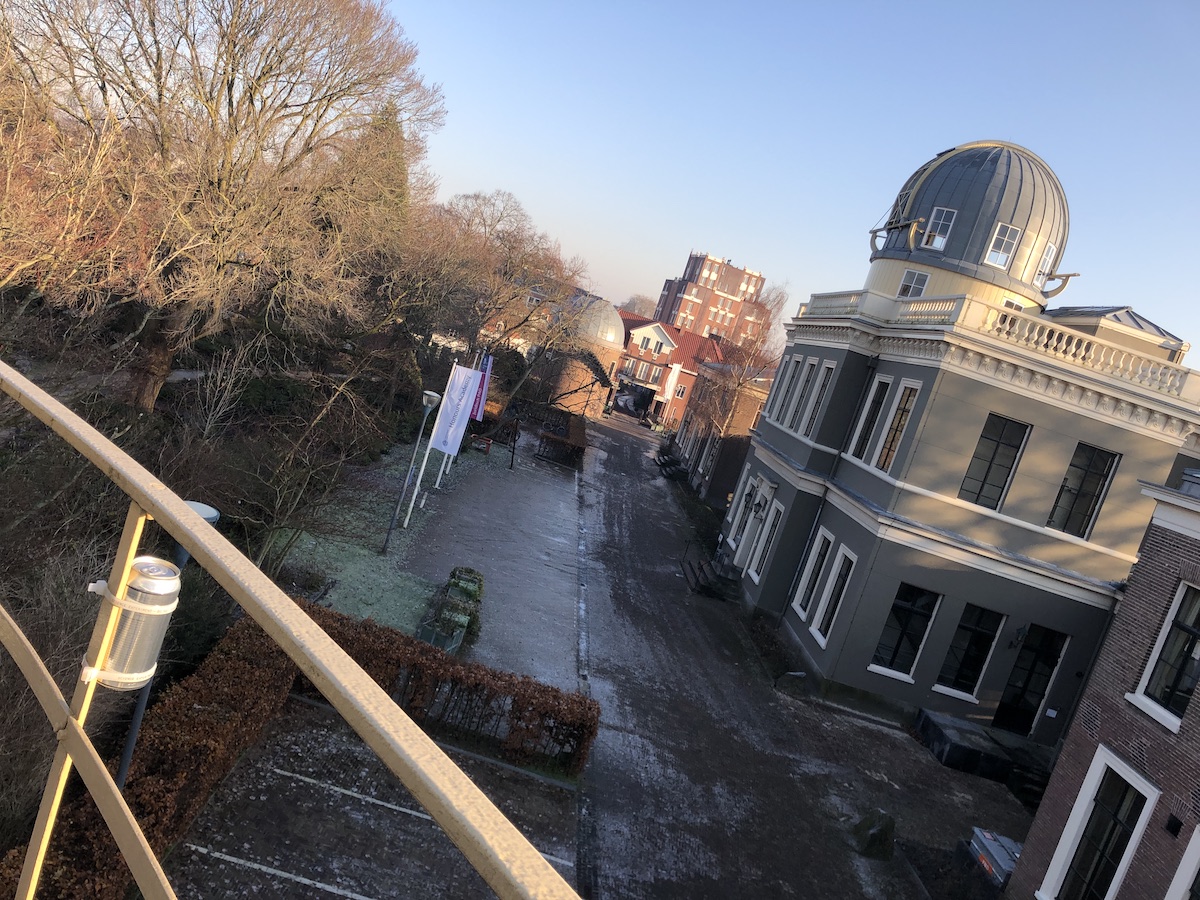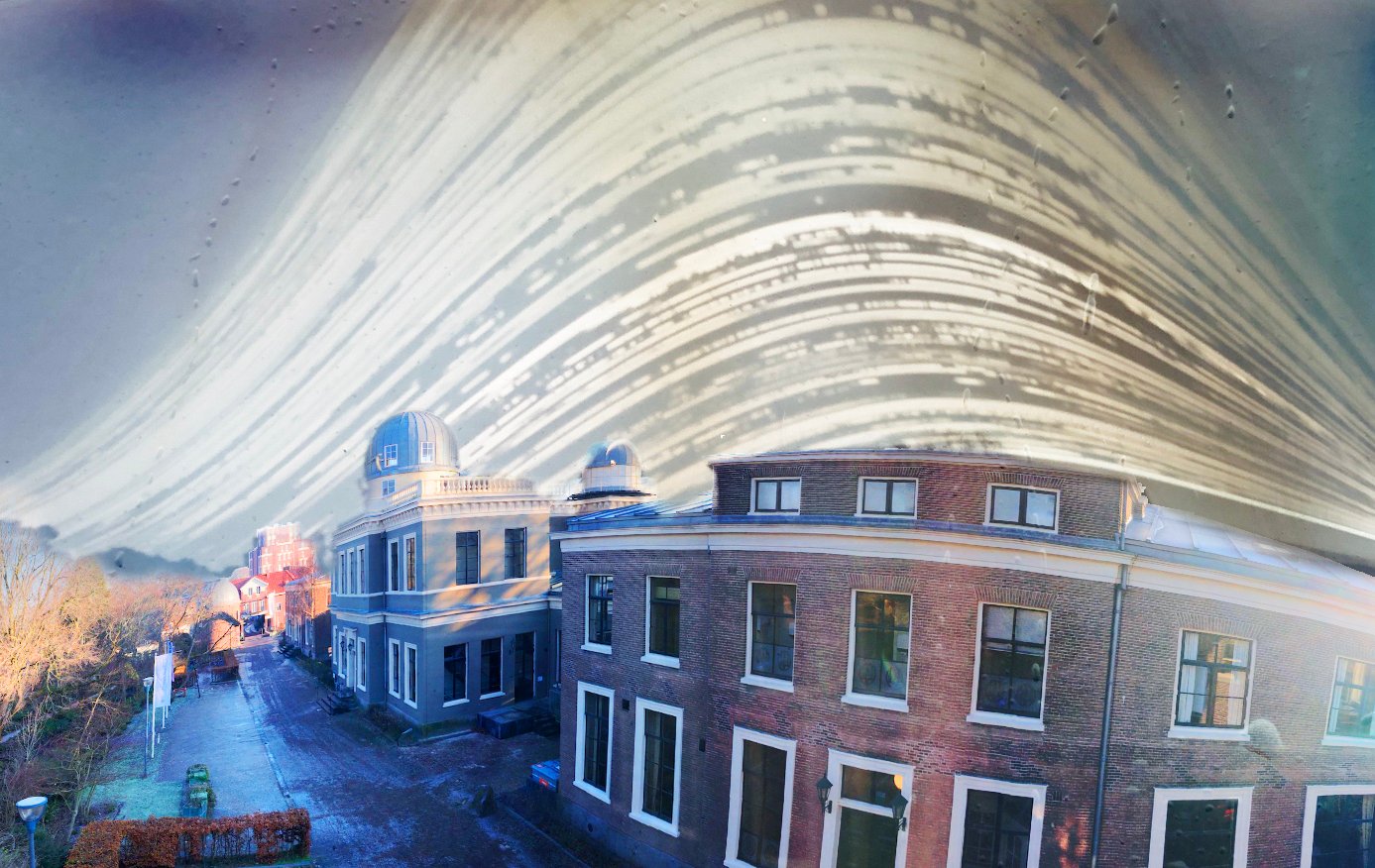Pinhole Cameras
Long exposure photography around Leiden
I've been using the SolarCan pinhole cameras since 2020 to take long exposure images in and around Leiden. These are aluminium cans that are delivered with photographic paper wrapped around the inside surface of the can, facing a pre-drilled pinhole halfway down the side of the can. You install them on a suitable post with two tie wraps and then remove the label covering the pinhole, starting the exposure.

The results can be amazing, and I'm especially proud of this photo of the Old Observatory buildings in downtown Leiden, here in the Netherlands. This image is from June 2022 to mid-December 2022, covering the Sun moving from the northernmost declination to its southernmost point on the celestial sphere. Each white line is the path of the Sun as seen by the pinhole camera, with the dark dashes due to cloud covering the Sun. The topmost track is in Summer, with Autumn paths making up the majority of the image, before the Winter Sun is moving behind the Old Observatory domes.
The illumination of the Sun on the buildings reminds me of a foggy day - there are no shadows here, but all the paint of the building windows can be clearly seen. Temporary structures and people fade to nothingness and you are left with only the buildings and trees, the sway of their branches smearing out into invisibility. For me it's a reminder of our impermanence.
There are a few tips I have for anyone using a SolarCam: For higher latitudes, the can will not quite catch the Sun near the Solstices (the highest and lowest points of the Sun on the Celestial sphere) so the Can does need to be tilted by 20 or 30 degrees to capture this. This opens up a possible problem - I have found water (about 10-20ml) in the base of the cans when I've opened them, presumably from water on the pinhole subsequently being drawn into the can by higher atmospheric pressure. It's not a big problem, but be aware that you can have a soggy photo paper at the end.

The other major catch is that the two plastic tiewraps are good, but not enough to stop the camera from being rotated around a narrow enough pole. This can happen in very strong winds, or if curious people wander past and try moving it just to see what happens. This leads to another problem - these Cans are very visually appealing and so they tend to attract attention very easily. I've seen other cameras covered in black duct tape to make them look more innocuous, with some degree of success. This leads to the more serious problem with these cameras, especially in a country as crowded as the Netherlands: people tend to come over and look at the cameras, and occasionally vandalize or steal them.
In 2021, I put up three cans around the Old Observatory: two on the roof of the Old Observatory, and one high up on a light pole in front of the Old Observatory (just in the line of sight of this picture). The completely remote can on the roof was undisturbed, there was one can fixed to the railings next to the large dome which was clearly moved at some point during the months by a curious Observatory visitor, and the final can that was visible and in a public space disappeared without trace after two months.
In retrospect, the photo would not have worked out. So I talked with the members of the smaller observatory outside the Old building, and they kindly let me fix the Solarcan in an area that was completely private but allowed for a wide view of the horizon. This ensured that the camera was completely undisturbed, resulting in the fantastic capture here
The social media account of the SolarCan company saw my photos of the pinhole image and the same panoramic photo I took of the view that the pinhole camera had, and photoshopped them together to make a really great image.
